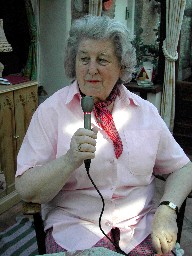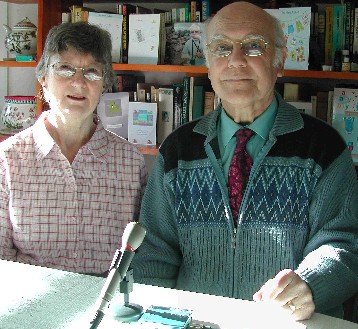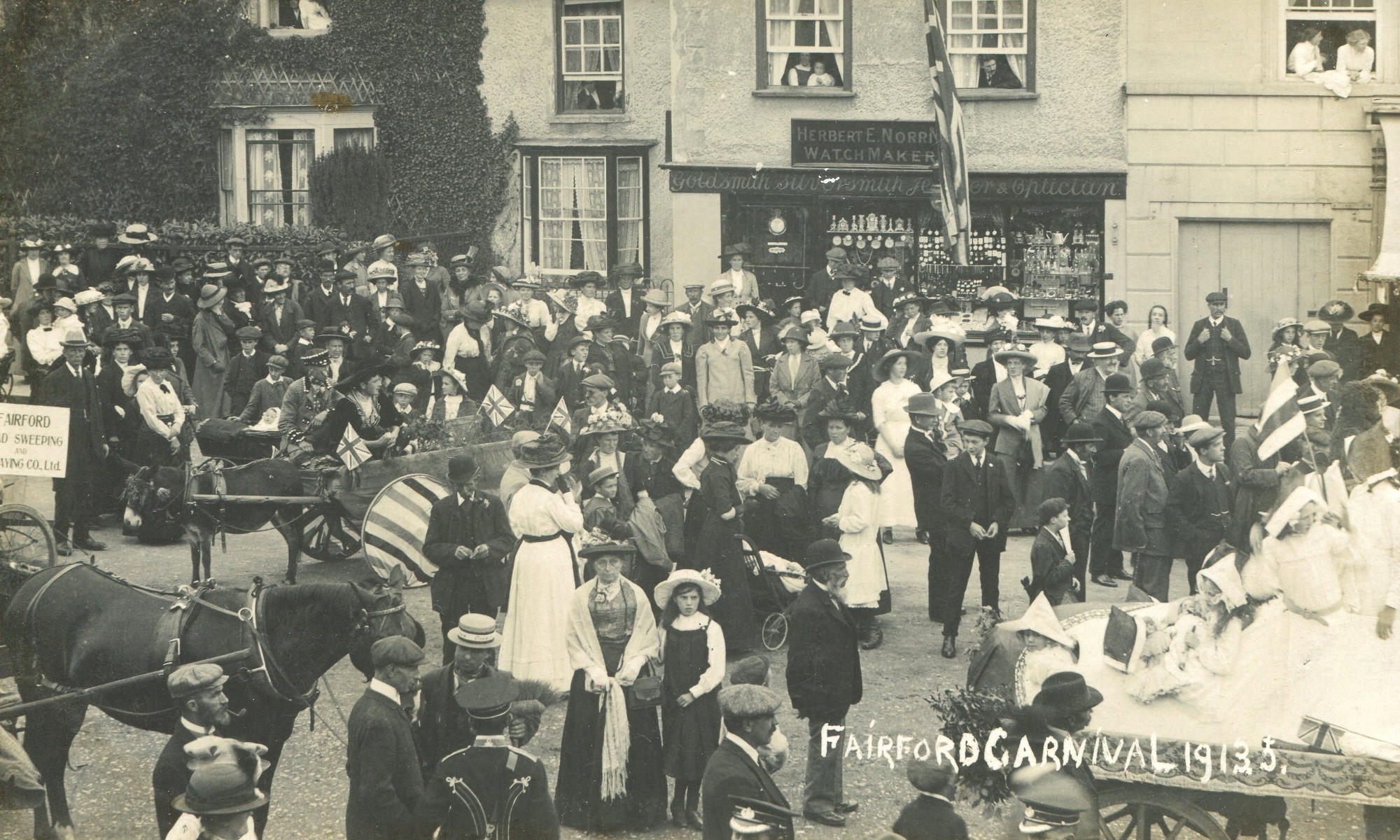The group, like the Fairford History Society, grew originally from the Community Centre project. Recording the heritage and history of the old school included events and activities which took place there and stories of the people involved, and we realised that there were still a number of people in Fairford who had personal experience of these. It would be good to record these memories while they were available, how should we set about it? We asked around, and were fortunate in finding a young lady, brought up in Fairford, with expertise in the subject. She was Dr. Mandy Morris, then working for the East Midlands Oral History Archive at the University of Leicester. Mandy was approached by her cousin, Alex D’Elia, and was interested enough in the Fairford project to attend one of the Heritage days. We naively thought that perhaps Mandy could show us how to make recordings, but quickly realised that a great deal more is involved. This was disappointing, but Mandy made the generous offer to run a free training day to pass on some expertise and teach us enough to make a start. On 7th. May 2004, six people attended a very professional Workshop, learning about interviewing, recording, equipment, copyright and ethics, transcripts, storage, funding etc. and trying out techniques of giving and recording interviews.

Next step was to choose the equipment needed and raise the funds to buy it. Grants from the Ernest Cook Trust and the Fairford Preservation Society enabled us to purchase 2 Sony MZN910 Mini Disc Recorders, 2 Audio Technica AT804 Microphones, a Dell Inspiron 510 Laptop Computer, plus associated Cables, Audio CD’s and Mini Discs. The audio software, Sonic Stage and Audacity, have been procured to manipulate the original recordings into wave files before copying onto the Audio CD’s and for preparing the minidisks for further recordings.
To date (February 2008), 30 recordings have been made.These recordings have been downloaded into the computer and the contents edited using the Audacity software. The edited versions have been saved as wave files and these files are then copied onto an Audio CD. Synopses of these recordings are prepared and placed onto this website for open access. Recordings can also be copied onto tape.
So far the recordings have concentrated on life in Fairford Schools old and new, and facilities and events from after the first world war up to the present day. The school recordings were used to provide material for the community play staged in St Mary’s Church during October 2007. It covered life in Fairford schools over the last three centuries. This project was supported by the Local Heritage Initiative and was a successful sell out over four evenings. Other recordings give details of past Fairford Carnivals known as ‘the Best in the West’, wartime conditions and incidents, the RAF airbase, shops and shopping in 20th century Fairford, the Railway Station and train services, and other events. There is a recording giving details of the Vicars of Fairford from the start of the present building in 1497 to more recent times. Another recording covers aspects of enclosures in the area over the centuries. One recording tells of the harrowing times experienced by a Polish Airman, now living in Fairford, during the second world war. Another recording was made of the Town Crier, Maurice Jones, explaining the stained glass pictures on the St Mary’s Church windows in a rich Gloucestershire accent.

The History Society meetings are also recorded and available This makes it possible to hear a repeat or to catch up when unable to attend a meeting.
Geoff Bishop, Former Group Leader
- Albert Alder, David Pitts
- Audrey Cowley, Jean Bennett, Kathleen Price, Peter Egerton
- Betty Cook
- Down Your Way – BBC radio programme 1982
- Enclosures Interview with John Hunt 11th May 2005
- Fairford Asylum and the Iles Family by Shelagh Diplock, read by Geoff Bishop
- Fairford at War and Schools by June Lewis-Jones
- Fairford Church windows A talk by Denys Hodson at the FHS meeting, 24th February 2005
- Fairford Floods 2007 (1)
- Fairford in the 1950s by Sid Flatman
- Fairford Medical practices
- Fairford Memories: AGM 2005
- Fairford Polish Hostel by Alicja Swiatek Christofides
- Fairford United Chapel
- Fairford, Manitoba, Canada by June Lewis Jones
- Farmor’s School – in transition
- Geoff & Mary Chick, Gillian Bilbrough, Jos Barker
- God sent a plague of frogs to Fairford
- In sickness and in health
- Liz & Phil Hope, Peter Egerton, Tony Rodgers
- Medieval pilgrims in Gloucestershire
- Melba Barnfield
- Peter Yells
- Root of the matter radio programme May 1990
- Schools: Derrick Youngs, Hugh Dudley and David Pitts
- Son et Lumière 30 years on: memories compiled by Geoff Bishop
- The late old clerk’s description of the painted glass windows of Fairford Church
- Vicars. Interview with John Hunt 27th April, 2005 and 20th March 2006
- Victorian Fairford – A snapshot of Fairford in the 19th Century
The essence of Oral History is to record the lives of people and what they experienced, witnessed and contributed to during their lifetime, and also to record the events of today – history in the making. Our recordings will be part of the Fairford Archive. They will be used in the heritage work at the Community Centre, will be made available for demonstrations and research, and will be preserved for future generations to enjoy.
